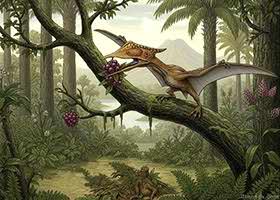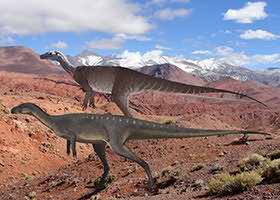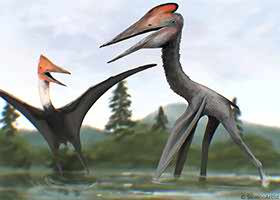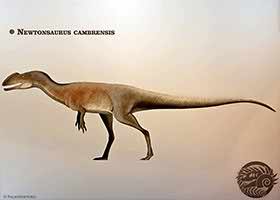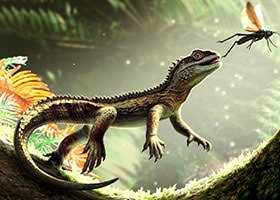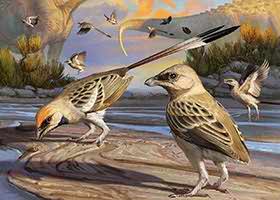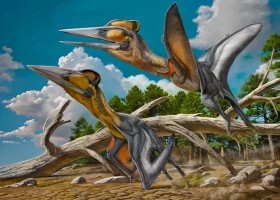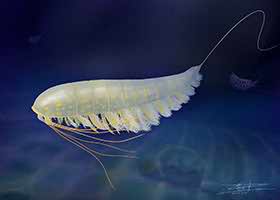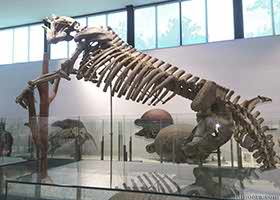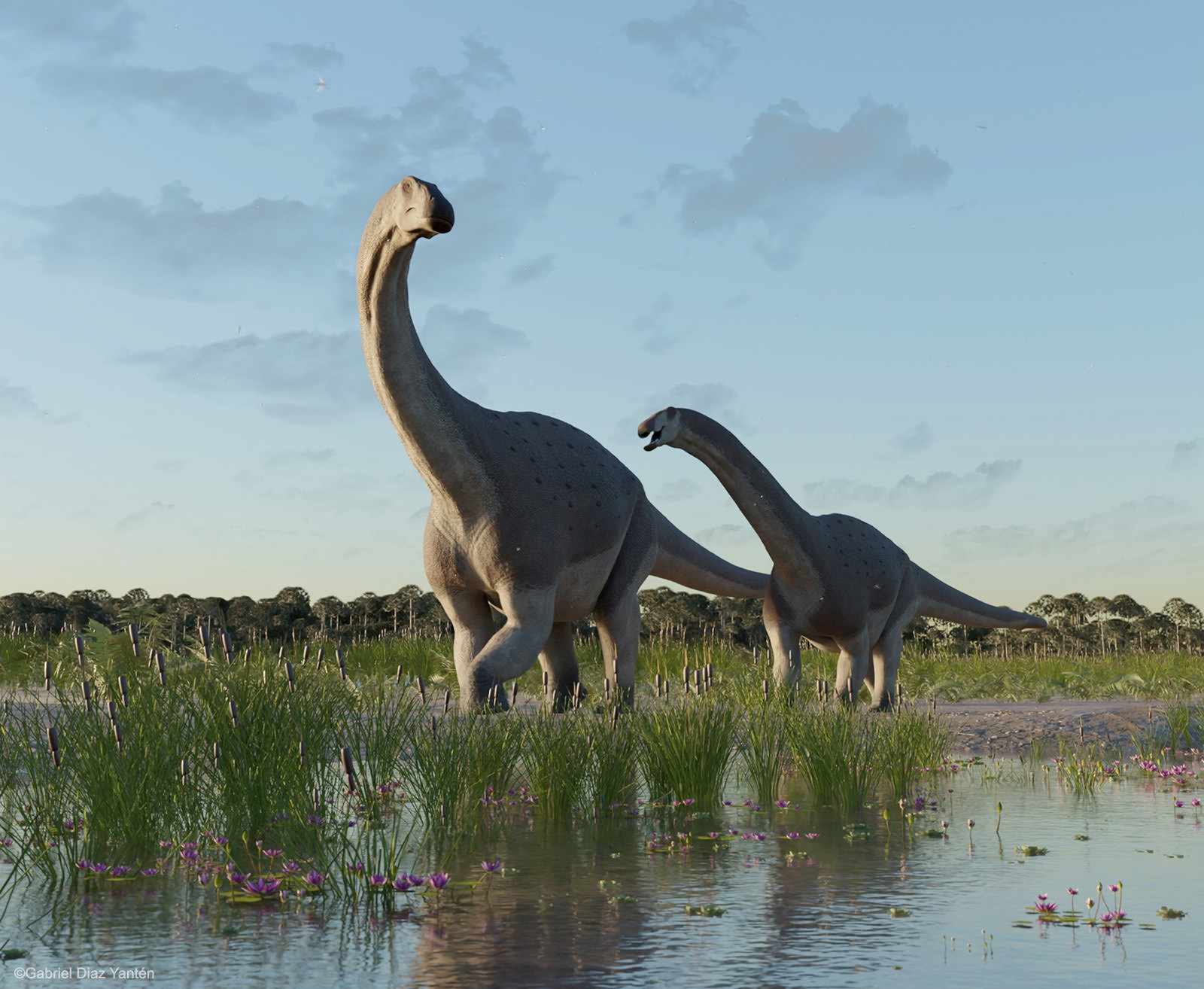New azhdarchid pterosaurs from the cosmopolitan azhdarchid family have been discovered in the Gobi Desert of Mongolia, expanding our understanding of flying reptiles from the Late Cretaceous period. These ancient creatures—Gobiazhdarcho tsogtbaatari and Tsogtopteryx mongoliensis—lived approximately 90 to 84 million years ago (Late Turonian–Santonian) in the Bayanshiree Formation, a region better known for its dinosaur […] ...
The large theropod Newtonsaurus is an unusually early predatory archosaur, since remains of large theropods rarely occur in the Triassic period. However, their tracks already appear in the Late Triassic. At that time, the dominant predators were rauisuchians, ornithosuchids, and some other pseudosuchians—ancestors of crocodiles. Discovery of a Welsh Dinosaur The story of the large […] ...
Agriodontosaurus oldest known lepidosaur, lived approximately 244 million years ago in what is now Devon, England. This small Triassic reptile, only 10 centimeters long, was a nimble hunter of large insects, armed with unusually large teeth. These features are reflected in its name, Agriodontosaurus helsbypetrae, which, in fact, means “sharp-toothed lizard from Helsby Rock,” a reference […] ...
The Navaornis fossil represents an astonishing blend of ancient and modern traits. Paleontologists have discovered a remarkably well-preserved enantiornithine bird, Navaornis, from the late Cretaceous period. This discovery is reshaping some of our understanding of avian evolution by filling in previously unknown gaps. This ancient bird species was about the size of a starling, with […] ...
Nipponopterus is the first formally described pterosaur from Japan. It lived during the Late Cretaceous, about 90 million years ago, on the island of Kyushu. Nipponopterus belonged to the family of pterosaurs Azhdarchidae, specifically the subfamily Quetzalcoatlinae, which includes the largest pterosaurs. The name of this extinct azhdarchid genus, Nipponopterus mifunensis, means “Nippon wing” from […] ...
The ancient arthropod fossil Lomankus edgecombei was discovered by a team from the University of Oxford, led by paleontologist Luke Parry, in the famous Beecher’s Trilobite Bed in New York State. This Late Ordovician find is notable for its excellent preservation, as pyrite (known as “fool’s gold”) quickly replaced the organism’s soft tissues. This is […] ...
The Natural Science Museum of Valencia stands in the city’s park area. It features a valuable paleontological collection of fossils, including unique Pleistocene finds by Rodrigo Botet from South America. At the end of the 19th century, collectors gathered the first specimens for the Museum of Valencia, and they have continuously added interesting specimens ever […] ...
Plesiosaurs were marine reptiles that existed during the Mesozoic era. They were fully adapted to aquatic life. Their evolution lasted for over 140 million years. During this time, they spread across the seas and oceans worldwide. During the early/middle Jurassic period (175–171 million years ago), the previously dominant lineage of plesiosaurs, Rhomaleosauridae, began to decline. […] ...








